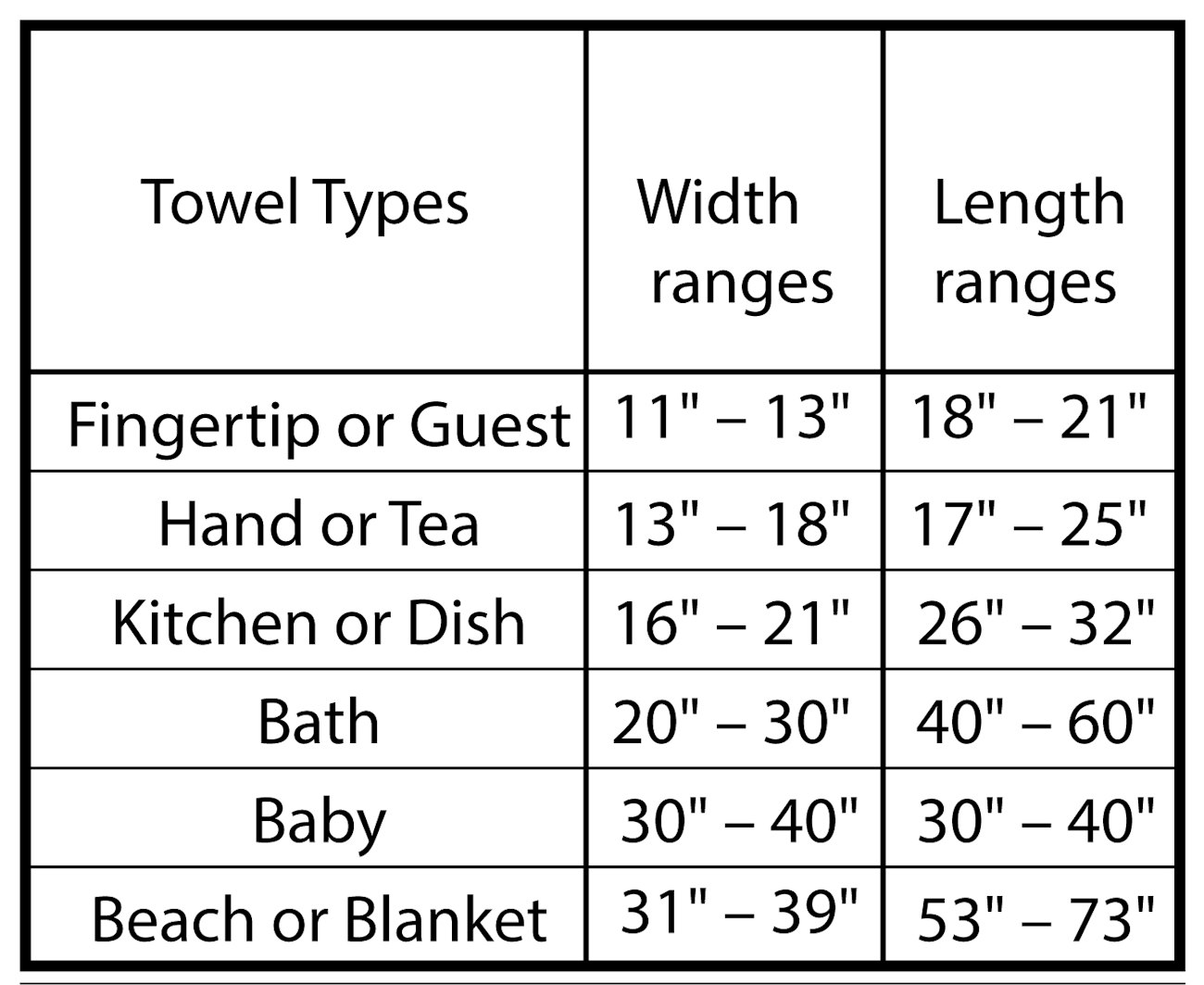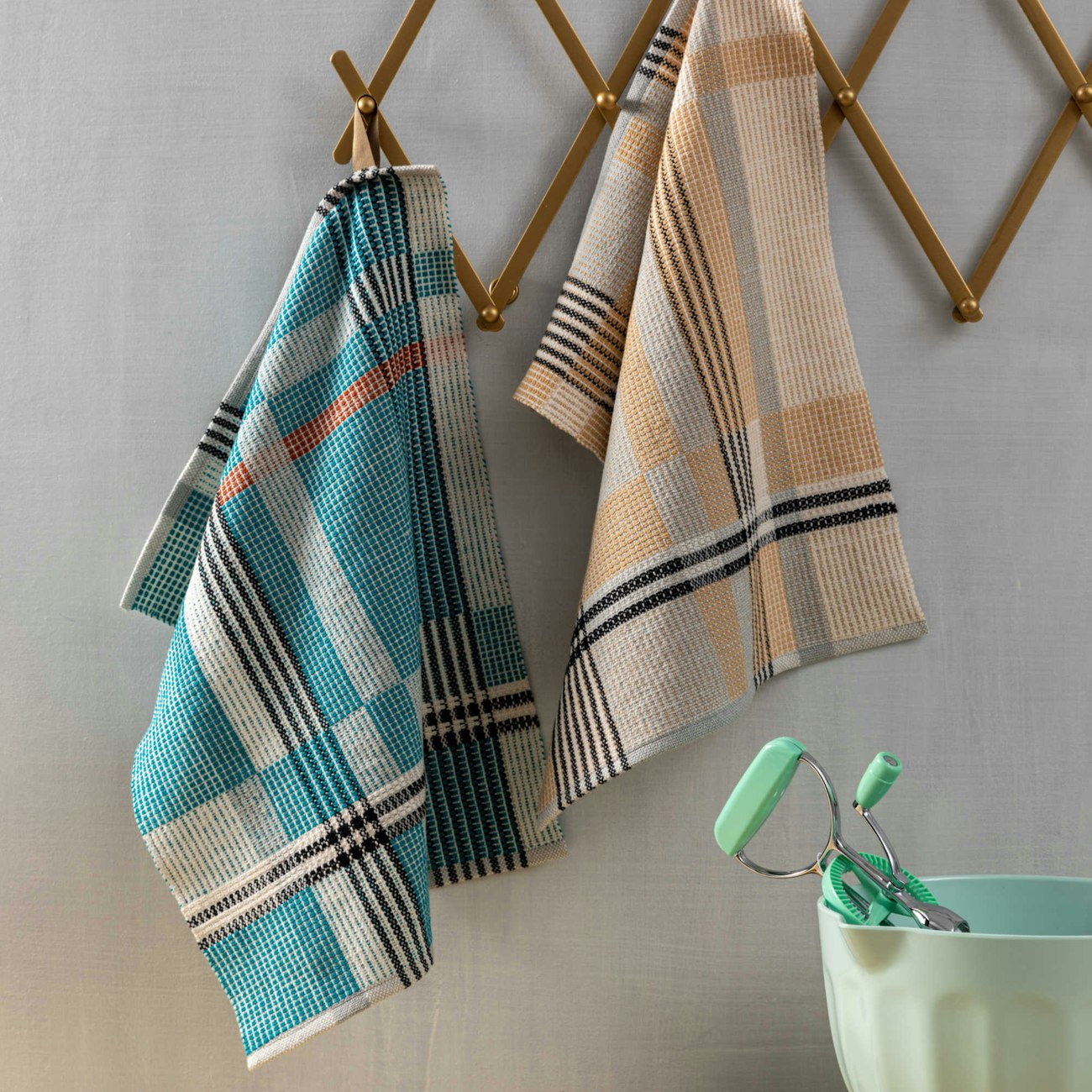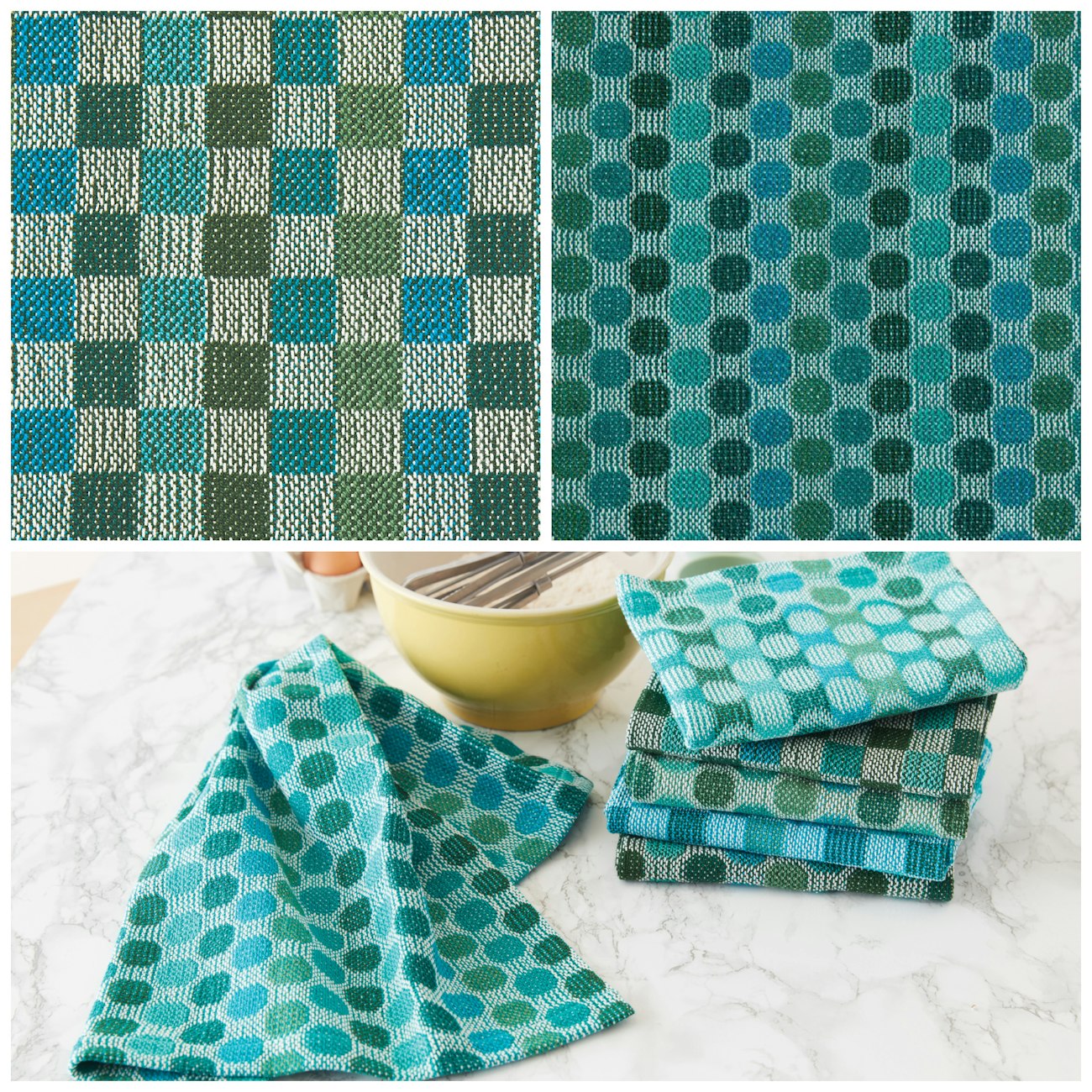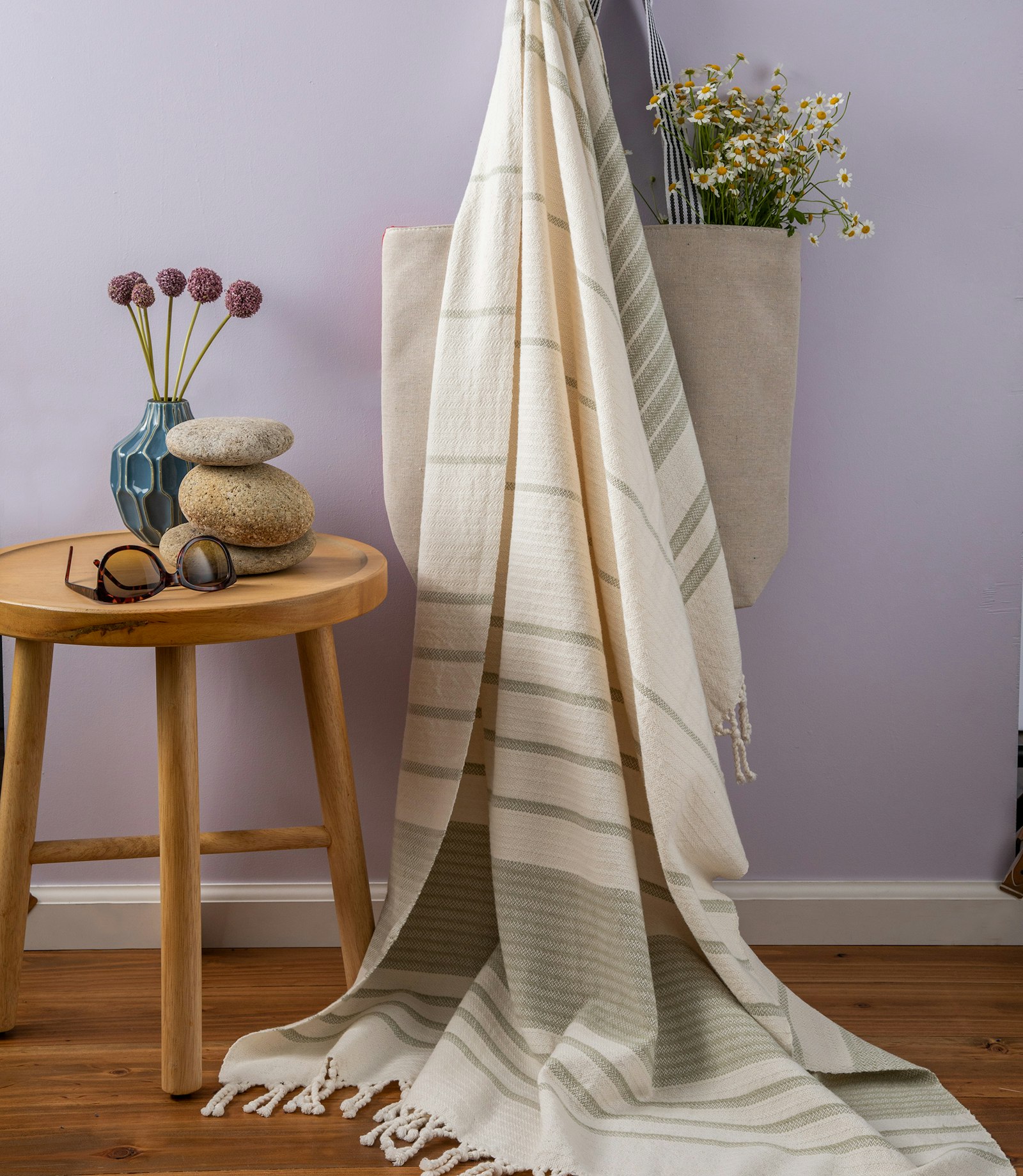Subscriber Exclusive
Handwoven Towels: Common Sizes and Types
From guest towels to beach towels, you can weave towels in any dimensions you wish, but it's helpful to know some basic sizes. For subscribers, I've also included three towel patterns to jumpstart your next project.
From guest towels to beach towels, you can weave towels in any dimensions you wish, but it's helpful to know some basic sizes. For subscribers, I've also included three towel patterns to jumpstart your next project. <a href="https://handwovenmagazine.com/towel/">Continue reading.</a>
https://handwovenmagazine.com/cdn-cgi/image/format=auto/https://www.datocms-assets.com/75077/1678835261-newman-mj22-graves.jpg?auto=format&w=900
Like many weavers, I have a drawer (or two!) of handwoven towels. I keep my towels in the kitchen, although we use some in our powder room. I consider them to be kitchen and hand towels, although there are some that I rarely use to dry dishes, and others that don’t make it down the hall to the powder room.
I change the towels in my kitchen every few days. I put out two at a time on the towel bar. I choose one that I consider a hand towel and one that is good for drying dishes. What I never do is pick two towels for the kitchen that match—I like them to be a bit mixed up. So, what makes one towel a hand towel and the other a kitchen towel? It’s perhaps purely personal preference, but I like a larger towel that isn’t thick for kitchen towels and drying dishes. I reserve the smaller thicker towels for the powder room and to use as hand towels in the kitchen.
In her article, “The Perfect Towel” in Handwoven November/December 2022, Tracy Kaestner says, “My favorite way to figure out the finished size for a project is to measure something I already own.” I am in complete agreement with Tracy, but if you need a little guidance, here is simple chart of common handwoven towel-size ranges to get you started on your next towel project.

Please note that for the chart above I used sizes I found in Handwoven and my own towel drawer, but if needed I relied on commercially woven sizes I found on-line. As I researched, I noticed a lot of overlap particularly in the smaller towel sizes. If you are uncertain of what size you want to weave, try folding a large piece of cloth to the various widths and then determine the length that looks attractive to you.
For the towel types list that follows, I assumed that a towel is used for drying, whether it’s fingers, hands, dishes, babies, bodies, or anything in between. Plus, if you are a current Handwoven magazine subscriber, and you want to jump into the world of towel weaving even faster, there are three towel projects included as PDF downloads at the end of this post.
Fingertip or Guest: These are the little towels people put in their powder room or guest bath, I guess in case your fingertips get wet. In my opinion, a smallish handwoven towel works very well as a fingertip towel.
 Christine Novotny's Bauhaus Weaver Hand Towels from March/April 2021 could also be called tea towels as they are on the smallish side and are cotton. Photo by Matt Graves.
Christine Novotny's Bauhaus Weaver Hand Towels from March/April 2021 could also be called tea towels as they are on the smallish side and are cotton. Photo by Matt Graves.
Hand or Tea: Hand towels can live in your kitchen, bathroom, even your laundry room, and among other things, they can be made out of terry cloth. Tea towels are linen or cotton but not terry cloth, and they are intended to be used in the kitchen.
Kitchen or Dish: I had to search specifically on kitchen towels to find size ranges. As expected, commercial kitchen towels are bigger than hand towels and fingertip towels, and in my experience they tend to be bigger than handwoven kitchen towels. Perhaps the manufacturers are trying to make up for the fact that commercial towels don’t dry dishes, although they excel at pushing water around a plate.
SUBSCRIBER EXCLUSIVE
Like many weavers, I have a drawer (or two!) of handwoven towels. I keep my towels in the kitchen, although we use some in our powder room. I consider them to be kitchen and hand towels, although there are some that I rarely use to dry dishes, and others that don’t make it down the hall to the powder room.
I change the towels in my kitchen every few days. I put out two at a time on the towel bar. I choose one that I consider a hand towel and one that is good for drying dishes. What I never do is pick two towels for the kitchen that match—I like them to be a bit mixed up. So, what makes one towel a hand towel and the other a kitchen towel? It’s perhaps purely personal preference, but I like a larger towel that isn’t thick for kitchen towels and drying dishes. I reserve the smaller thicker towels for the powder room and to use as hand towels in the kitchen.
In her article, “The Perfect Towel” in Handwoven November/December 2022, Tracy Kaestner says, “My favorite way to figure out the finished size for a project is to measure something I already own.” I am in complete agreement with Tracy, but if you need a little guidance, here is simple chart of common handwoven towel-size ranges to get you started on your next towel project.

Please note that for the chart above I used sizes I found in Handwoven and my own towel drawer, but if needed I relied on commercially woven sizes I found on-line. As I researched, I noticed a lot of overlap particularly in the smaller towel sizes. If you are uncertain of what size you want to weave, try folding a large piece of cloth to the various widths and then determine the length that looks attractive to you.
For the towel types list that follows, I assumed that a towel is used for drying, whether it’s fingers, hands, dishes, babies, bodies, or anything in between. Plus, if you are a current Handwoven magazine subscriber, and you want to jump into the world of towel weaving even faster, there are three towel projects included as PDF downloads at the end of this post.
Fingertip or Guest: These are the little towels people put in their powder room or guest bath, I guess in case your fingertips get wet. In my opinion, a smallish handwoven towel works very well as a fingertip towel.
 Christine Novotny's Bauhaus Weaver Hand Towels from March/April 2021 could also be called tea towels as they are on the smallish side and are cotton. Photo by Matt Graves.
Christine Novotny's Bauhaus Weaver Hand Towels from March/April 2021 could also be called tea towels as they are on the smallish side and are cotton. Photo by Matt Graves.
Hand or Tea: Hand towels can live in your kitchen, bathroom, even your laundry room, and among other things, they can be made out of terry cloth. Tea towels are linen or cotton but not terry cloth, and they are intended to be used in the kitchen.
Kitchen or Dish: I had to search specifically on kitchen towels to find size ranges. As expected, commercial kitchen towels are bigger than hand towels and fingertip towels, and in my experience they tend to be bigger than handwoven kitchen towels. Perhaps the manufacturers are trying to make up for the fact that commercial towels don’t dry dishes, although they excel at pushing water around a plate. [PAYWALL]

Susan Poague’s beautiful Circles & Checks Towels in Turned Taquete from May/June 2019 could be used for hand or kitchen towels. Photo by George Boe
Bath: I don’t remember many bath-towel projects in Handwoven. Maybe weavers shy away from weaving bath towels because they feel obligated to weave a whole set, 2 bath towels, 2 hand towels, and 2 wash cloths that all go together. That said, I’m now dreaming of a set of handwoven bath towels that match my bathroom!
Baby: There have been a few baby towels in Handwoven, and Christina Garton once wrote that her favorite baby blanket was essentially a large towel, which to my mind made it extra useful. To her point, when my granddaughter was an infant, we sometimes grabbed a kitchen towel out of the drawer to wrap around her in her car seat. Most baby bath towels are square or almost square.
 Coastal Crackle Towels by Rebecca Fox. Photo by Matt Graves
Coastal Crackle Towels by Rebecca Fox. Photo by Matt Graves
Beach and Blanket: These are the biggest towels and perhaps daunting for a handweaver, but check out the beautiful Big Wrap Beach Blanket from May/June 2022 (see photo at top) by Cynthia Newman, and you may be convinced that you need one or two—you know, to go with that set of bath towels you just added to your to-weave list! There were also the Coastal Crackle Beach Towels by Rebecca Fox in the January/February 2022 issue of Handwoven.
Download one or all three of these towel projects. Sizes and towel types aside, they are all great examples of the beauty and utility of handwoven towels.
Weave well,
Susan

 Christine Novotny's Bauhaus Weaver Hand Towels from March/April 2021 could also be called tea towels as they are on the smallish side and are cotton. Photo by Matt Graves.
Christine Novotny's Bauhaus Weaver Hand Towels from March/April 2021 could also be called tea towels as they are on the smallish side and are cotton. Photo by Matt Graves. 


 Coastal Crackle Towels by Rebecca Fox. Photo by Matt Graves
Coastal Crackle Towels by Rebecca Fox. Photo by Matt Graves